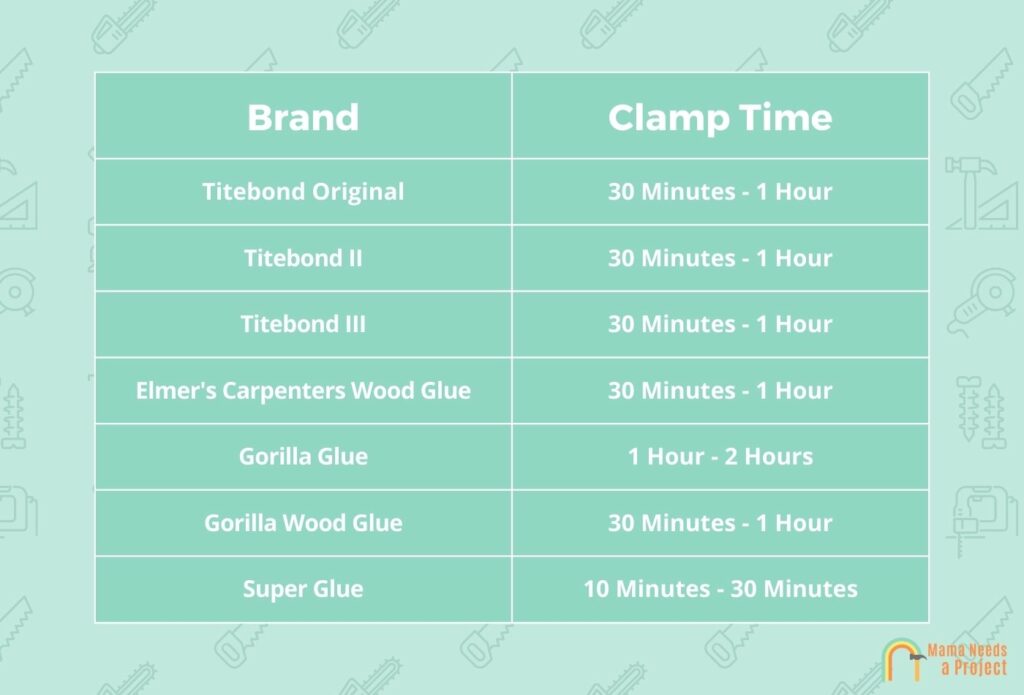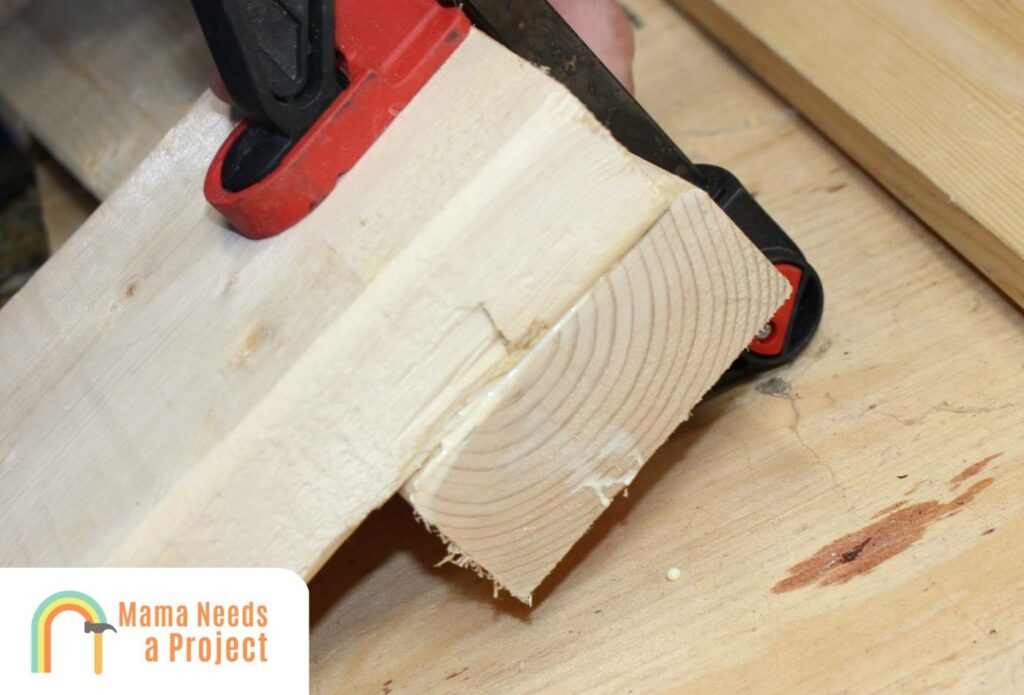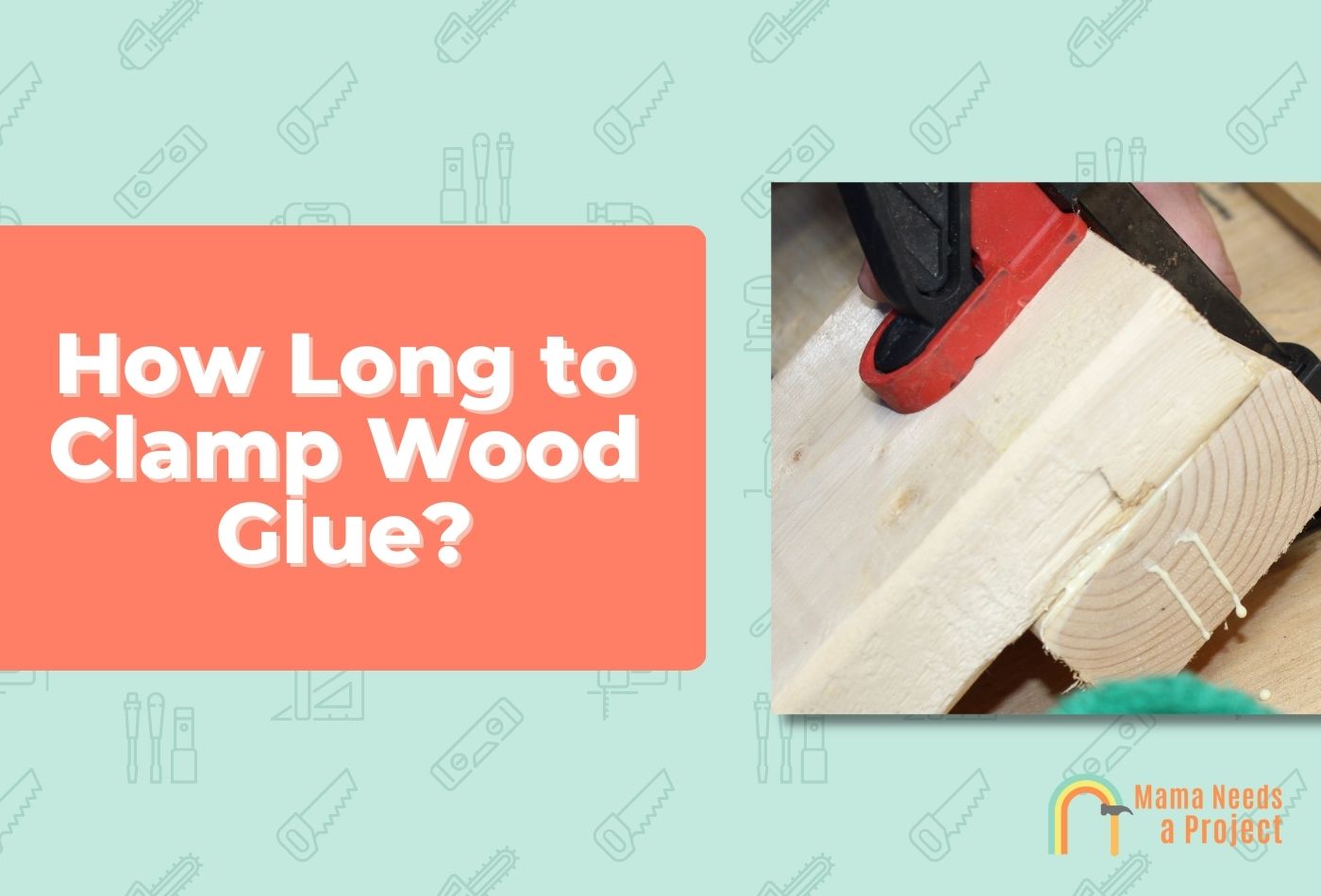How Long to Clamp Wood Glue?
Whenever using wood glue, clamping is an essential step to ensure the strongest bond possible.
But how long should you clamp wood glue?
In this post, I’ll uncover everything you should know about how long to clamp wood glue and much more. Let’s dig in!
In general, you should clamp wood glue for at least 30 minutes to one hour after application. However, the clamping time varies from glue to glue and the project you’re working on. For projects that endure a large amount of stress, a longer clamping time may be required.

Wood Glue Clamp Time for PVA Glue
For PVA glues such as Elmer’s Carpenter Wood Glue and Titebond Original Wood Glue, you should clamp for at least 30 minutes.
You can keep the wood clamped for over 24 hours until the glue has completely cured to create the strongest bond possible.
You should also make sure the clamping pressure isn’t too strong that all of the glue squeezes out of the sides when clamped (there might be some, but make sure it’s not all of it!).
How Long to Clamp Titebond II
The clamping time for Titebond II is around 30 minutes to an hour under normal conditions.
How Long to Clamp Titebond III
The clamping time for Titebond III is around 30 minutes. While Titebond claims is has a shorter clamp time, they still recommend at least 30 minutes of clamping.
How Long to Clamp Super Glue
The clamping time for Super Glue is around 10 to 30 minutes.
How Long to Clamp Gorilla Wood Glue
Gorilla Wood Glue should be clamped for 30 to 1 hour like most other glues.
How Long to Clamp Polyurethane Glue (Gorilla Glue)
If you’re using a polyurethane glue like Gorilla glue, you should clamp for at least one to two hours. While not all polyurethane glues require clamping, it’s usually recommended for the strongest bond.
How Long to Clamp Epoxy
While clamping isn’t required for an epoxy glue, it’s recommend you clamp for 10 to 30 minutes for the strongest bond.
Factors that Affect Clamp Time

There are a few factors that can affect the clamping and drying time of your wood glue. Here are some of the most common:
- Temperature. Working in extreme temperatures can require more clamp time to ensure a strong bond. Try to use your glue in a room temperature environment for the fastest drying time.
- Humidity. The humidity in your working area will have a large influence on the drying time and clamping time of your woodworking glue. If there is excess moisture in the air, it will require a longer clamp time.
- How much glue used is used. If you apply wood glue heavily, it will take longer to dry, and should be clamped for longer. You should aim for a thin layer of glue across the entire surface.
FAQs
How tight should you clamp wood glue joint?
It’s important not to apply too much clamping pressure when using clamps. In general, you don’t want the glue to
Do you have to clamp wood glue?
While it’s not technically required, using clamps when gluing wood and other surfaces will ensure the most durable and longest lasting bond possible. I always recommend it.
Final Thoughts
For most wood glues, between 30 minutes and 1 hour of clamping should do the trick to ensure you get the strongest bond possible. However, some wood glues may require more clamping time than others.
For example, polyurethane glues recommend clamping for at least 1 hour.

